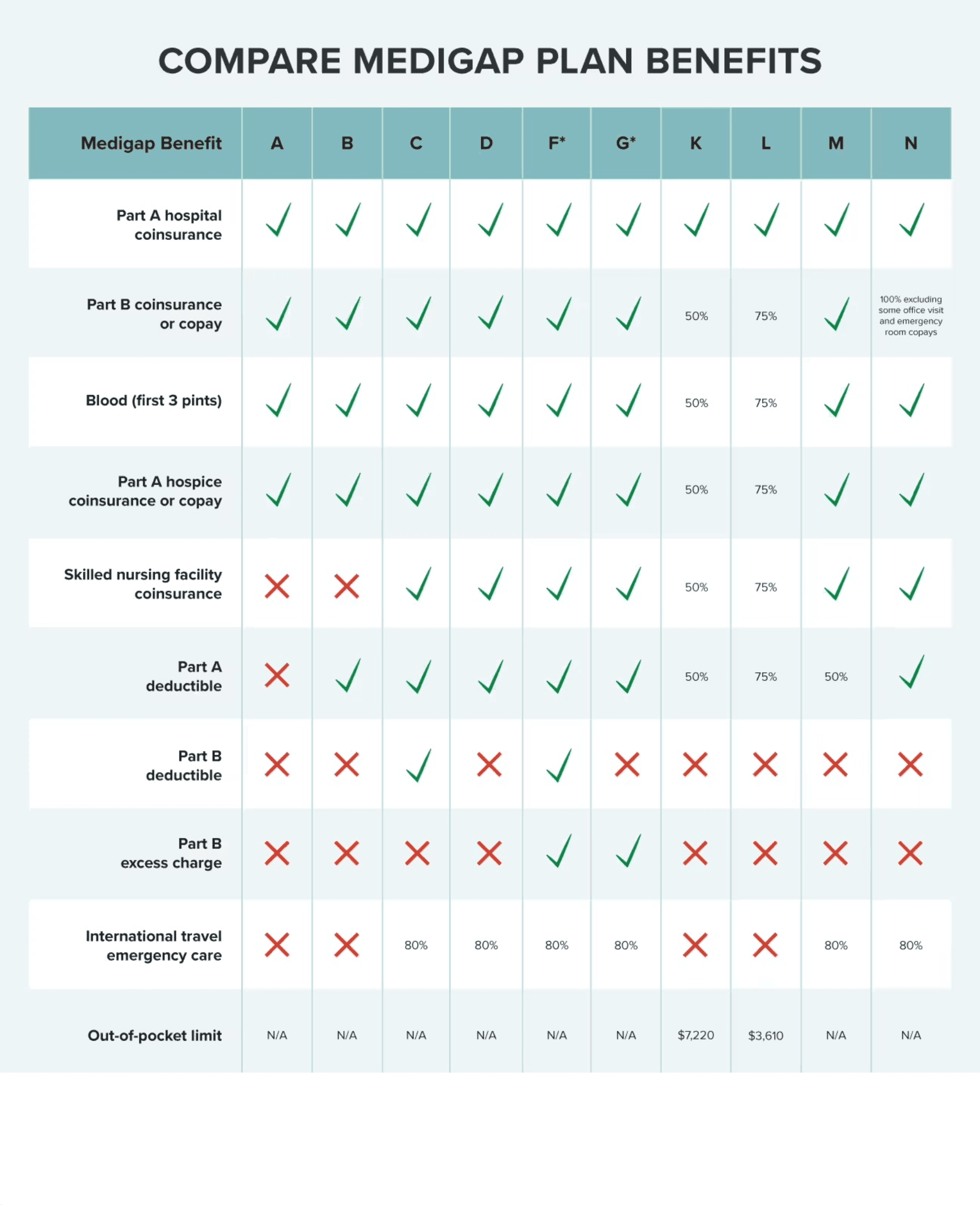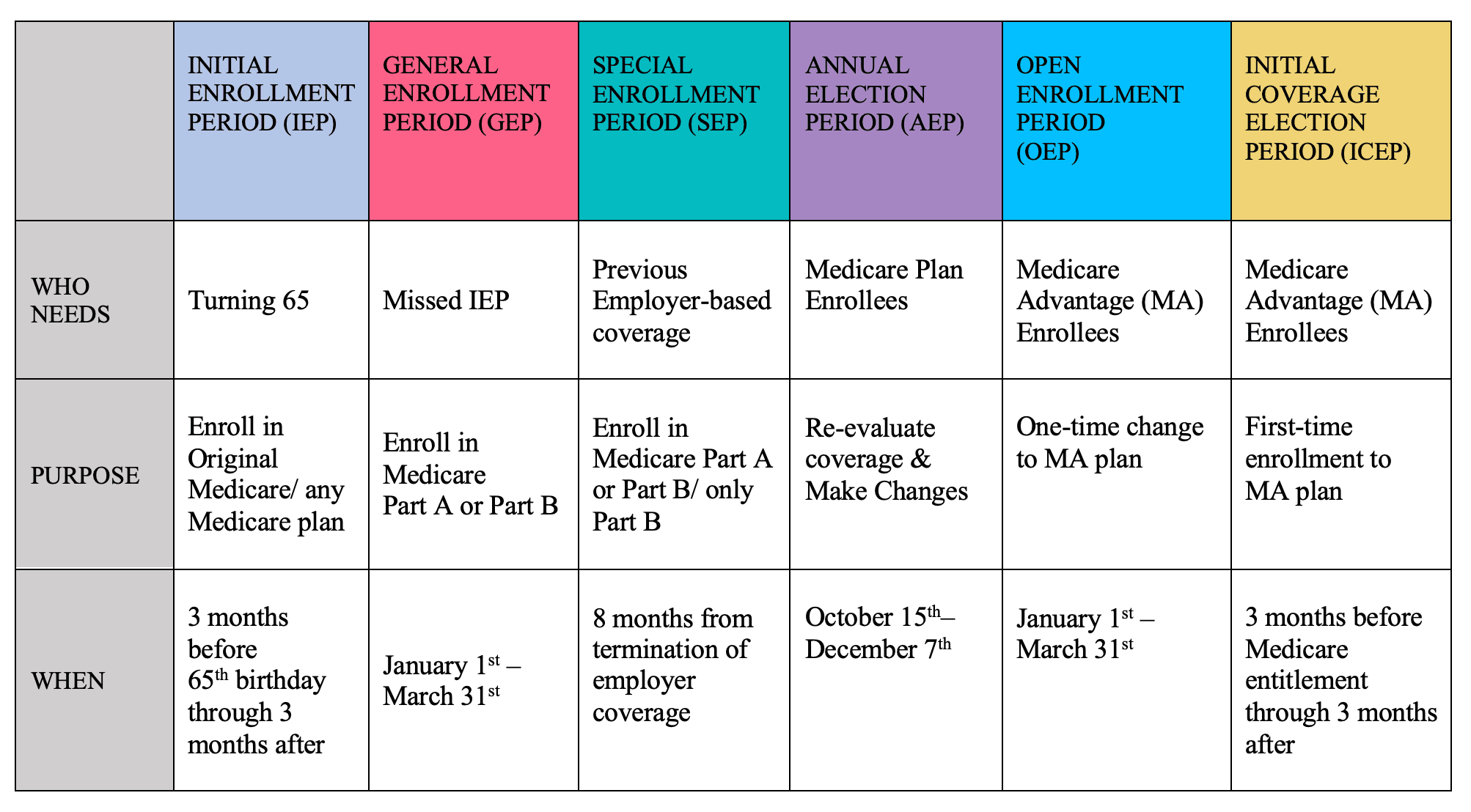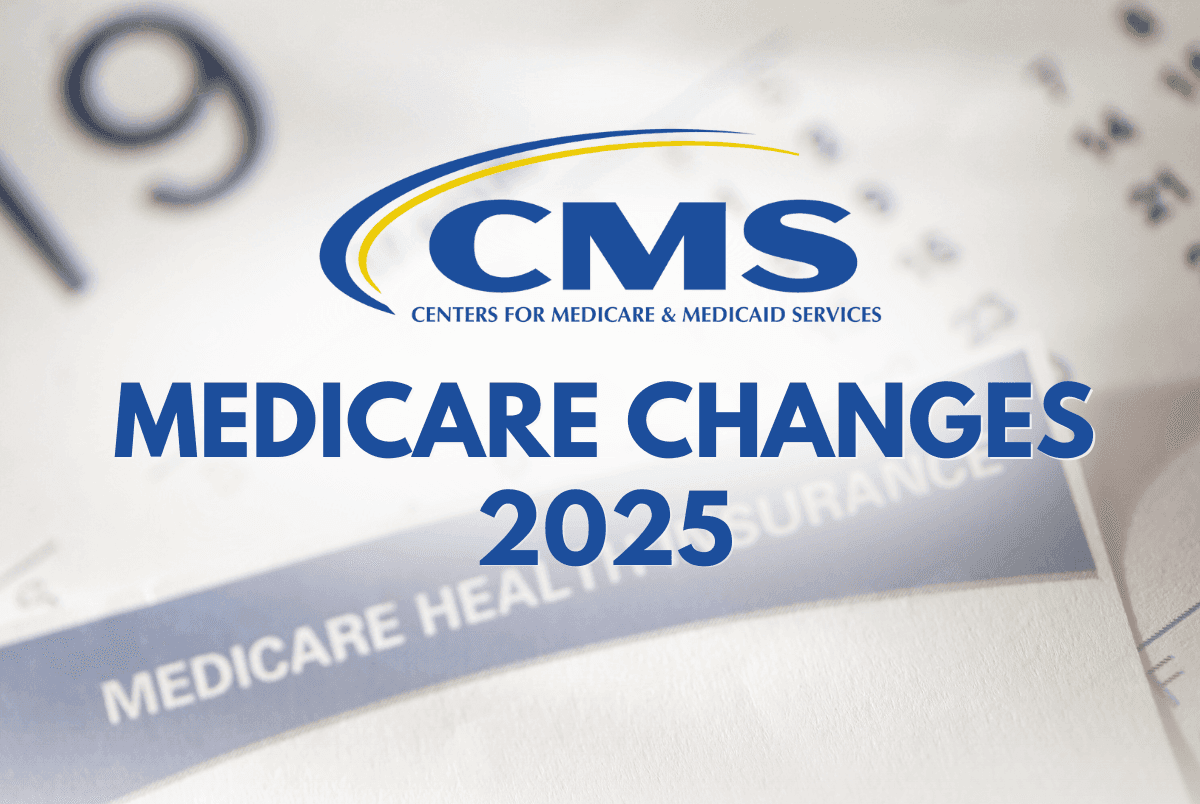Choose a Medigap Plan that's Right for You
It's always good to have options. Isn't it?
Speak with a Medicare Advocate
You like to have options getting a health insurance plan, right?
Even though Medicare Part A and Part B
Choosing the Medigap plan that suits you is a big decision, but there are a lot of options available, so it can seem a bit complicated.
We understand that.
To make it easier, we've put together a comparison of the benefits of all the Medigap plans, so you can compare one plan against another and select the one that's right for you.
What Is a Medigap Plan?
With Medicare, you might still have to pay a portion of your healthcare services as deductibles, copays, and coinsurance
Medigap is a health insurance policy sold by private insurance companies to fill the "gaps" in original Medicare coverage. You might need to pay a monthly premium for a Medigap policy in addition to your monthly Part B premium.
To sign up for a Medigap plan, you must have Medicare Parts A and B coverage. Once you've enrolled in Medicare Parts A and B, you can choose a Medigap plan that meets your needs and purchase it.
Medigap policies don't have networks, so you can go to any doctor or hospital that accepts Medicare. Moreover, some Medigap plans even offer extra benefits for emergency medical care while traveling outside the United States
How Do I Compare Different Medigap Plans?
Medicare beneficiaries can choose from at least nine different Medicare Supplement (Medigap) plans in 2025, each identified by a letter. The federal government standardizes these plans, so each plan offers the same basic benefits regardless of where you purchase it.
Note: Medicare beneficiaries signing up for Medicare on or after January 1, 2020, can no longer purchase Medigap plans that cover the Part B deductible. So, Plans C and F are no longer available for them. However, if you were eligible for Medicare before January 1, 2020, but have not yet enrolled, you may be able to purchase Plan C or Plan F, which would cover your Part B deductible. You can keep your plan if you were covered by Plan C or F (or the Plan F high-deductible version) before January 1, 2020.
Most Medigap plans cover the same basic benefits, while some may provide additional benefits. You can compare plans in the chart below and choose the plan you like.

Medigap Plans — Comparison Chart 2025
Some states offer a Medigap plan called the Medicare SELECT plan
How Much Does a Medigap Plan Cost?
The total cost of Medigap plans the plan you choose
While some Medigap plans cover 100% of your service once you pay the required deductible amount, others may have copayments or coinsurance in addition to the premium. Different insurance companies may charge different premiums for the same plan, so it pays to compare when shopping for a plan.
The total cost of a Medigap plan depends on:
Part A/B premium
Medigap plan premium
Deductibles — The amount you pay before your insurance coverage begins
Copayments — The amount you pay as your share for services after paying any deductibles, usually a percentage
Coinsurance — The amount you pay as your share for a medical service
Do Medigap Plans Have Network Limitations?
No, standard Medigap plans are not restricted to specific networks. Healthcare providers who accept Medicare also accept Medigap.
Some Medigap plans even provide emergency healthcare services outside the U.S.
However, state-sponsored Medigap plans like Medicare SELECT have network limitations. Healthcare providers outside this network will not provide coverage except in an emergency.
Medigap plans in Massachusetts, Minnesota, and Wisconsin
Medigap plans are standardized across all states in the U.S. except in Massachusetts Minnesota Wisconsin
Even though the basic benefits are common across most of the Medigap plans, each of these states has a different way of handling Medigap, so you'll want to understand the differences before you purchase your plan.
However, beneficiaries in these states can use their policy nationwide with any doctor who accepts Medicare, just like the standard Medicare Supplement plans in other states.
When Do You Enroll in a Medigap Plan?
If you want to enroll in Medigap
Enrolling during your Initial Enrollment Period medical underwriting
Enrolling during any other time of the year may require medical underwriting, and providers may reject your application if you have a pre-existing condition.
Takeaway
Medigap plans can be an advantage for covering your out-of-pocket expenses. And since all Medicare-approved providers accept it, there are no network restrictions.
If you're looking for help selecting a Medigap plan that's right for you, we're here to make things easier. With an extensive knowledge of Medigap plans, our experts can provide an unbiased opinion
Call us at 1-888-376-2028 to get a better understanding of your Medigap options.
Recommended Articles

Is PAE Covered by Medicare?
Nov 23, 2022

Does Medicare Cover Kyphoplasty?
Dec 9, 2022

Does Medicare Cover Shock Wave Therapy for Plantar Fasciitis?
Nov 30, 2022

How to Choose a Medigap Plan
Jan 10, 2023

How to Apply for Medicare?
Jul 15, 2022

How Do I Sign up for Medicare? A Simple How-To Guide For You
Apr 8, 2022

Does Medicare Cover Jakafi?
Dec 12, 2022

What to Do When Your Doctor Leaves Your Network
Jul 15, 2025

How Much Does Xeljanz Cost with Medicare?
Jan 25, 2023

What Is a Medicare Advantage POS Plan?
May 10, 2023

How Do Medigap Premiums Vary?
Apr 12, 2023

Does Medicare Cover Nexavar?
Nov 30, 2022

Does Medicare Cover Lipoma Removal?
Dec 8, 2022

Does Medicare Cover Zilretta?
Nov 28, 2022

Does Medicare Cover the Urolift Procedure?
Dec 6, 2022

How is Medicare Changing in 2025?
Dec 21, 2022

Does Medicare Cover Inspire for Sleep Apnea?
Dec 27, 2022

Do I Need to Renew My Medicare?
Nov 29, 2022
More of our articles
13 Best Ways for Seniors to Stay Active in Phoenix
14 Best Ways to Stay Active in Charlotte
2024 Fair Square Client Retention and Satisfaction Report
2025 Medicare Price Changes
Can Doctors Choose Not to Accept Medicare?
Can I Change My Primary Care Provider with an Advantage Plan?
Comparing All Medigap Plans | Chart Updated for 2025
Denied Coverage? What to Do When Your Carrier Says No
Do All Hospitals Accept Medicare Advantage Plans?
Do You Need Medigap if You're Eligible for Both Medicare and Medicaid?
Does Medicare Cover Bariatric Surgery?
Does Medicare Cover Cardiac Ablation?
Does Medicare Cover Cartiva Implants?
Does Medicare Cover Chiropractic Visits?
Does Medicare Cover Cold Laser Therapy (CLT)?
Does Medicare Cover Compounded Medications?
Does Medicare cover Deviated Septum Surgery?
Does Medicare Cover Exercise Physiology?
Does Medicare Cover Hearing Aids?
Does Medicare Cover Inqovi?
Does Medicare Cover Iovera Treatment?
Does Medicare Cover Kidney Stone Removal?
Does Medicare Cover LVAD Surgery?
Does Medicare Cover Medical Marijuana?
Does Medicare Cover Ofev?
Does Medicare Cover Penile Implant Surgery?
Does Medicare Cover Physicals & Blood Work?
Does Medicare Cover Qutenza?
Does Medicare Cover Robotic Surgery?
Does Medicare Cover RSV Vaccines?
Does Medicare Cover Scleral Lenses?
Does Medicare Cover SIBO Testing?
Does Medicare Cover TENS Units?
Does Medicare Cover Urodynamic Testing?
Does Medicare Cover Wart Removal?
Does Medicare Pay for Antivenom?
Does Medicare Pay for Funeral Expenses?
Estimating Prescription Drug Costs
Fair Square Bulletin: We're Revolutionizing Medicare
Gap Health Insurance: The Secret Sidekick to Your High-Deductible Plan
How Are Medicare Star Ratings Determined?
How Do Medicare Agents Get Paid?
How Does Medicare Cover Colonoscopies?
How Does Medicare Pay for Emergency Room Visits?
How Much Does a Medicare Coach Cost?
How Much Does Medicare Part B Cost in 2025?
How Much Does Open Heart Surgery Cost with Medicare?
How Much Does Rexulti Cost with Medicare?
How Much Does Trelegy Cost with Medicare?
How Often Can I Change Medicare Plans?
How to Become a Medicare Agent
How to Deduct Medicare Expenses from Your Taxes
Is Balloon Sinuplasty Covered by Medicare?
Is Fair Square Medicare Legitimate?
Is Gainswave Covered by Medicare?
Medicare & Ozempic
Medicare 101
Medicare Advantage MSA Plans
Medicare Consulting Services
Medicare Guaranteed Issue Rights by State
Moving? Here’s What Happens to Your Medicare Coverage
Plan G vs. Plan N
Seeing the Value in Fair Square
Should You Work With A Remote Medicare Agent?
The Easiest Call You'll Ever Make
What Is a Medicare Supplement SELECT Plan?
What is the 8-Minute Rule on Medicare?
What Is the Medicare Birthday Rule in Nevada?
What is the Medicare ICEP?
What to Do When Your Doctor Doesn't Take Medicare
When Can You Change Medicare Supplement Plans?
When to Choose Medicare Advantage over Medicare Supplement
Get the Fair Square Bulletin
Medicare savings tips, helpful guides, and more.
Virgil Insurance Agency, LLC (DBA Fair Square Medicare) and www.fairsquaremedicare.com are privately owned and operated by Help Button Inc. Medicare supplement insurance plans are not connected with or endorsed by the U.S. government or the federal Medicare program. This is a solicitation of insurance. A licensed agent/producer may contact you. Medicare Supplement insurance is available to those age 65 and older enrolled in Medicare Parts A and B and, in some states, to those under age 65 eligible for Medicare due to disability or End-Stage Renal disease. Virgil Insurance Agency is a licensed and certified representative of Medicare Advantage HMO, HMO SNP, PPO, PPO SNP and PFFS organizations and stand-alone PDP prescription drug plans. Each of the organizations we represent has a Medicare contract. Enrollment in any plan depends on contract renewal. The plans we represent do not discriminate on the basis of race, color, national origin, age, disability, or sex. Plan availability varies by region and state. For a complete list of available plans please contact 1-800-MEDICARE (TTY users should call 1-877-486-2048), 24 hours a day/7 days a week or consult www.medicare.gov. © 2025 Help Button Inc
We do not offer every plan available in your area. Any information we provide is limited to those plans we do offer in your area. Please contact Medicare.gov or 1-800-MEDICARE to get information on all of your options.
MULTIPLAN_FairSquareMedicare_01062022_M
Fair Square Medicare


